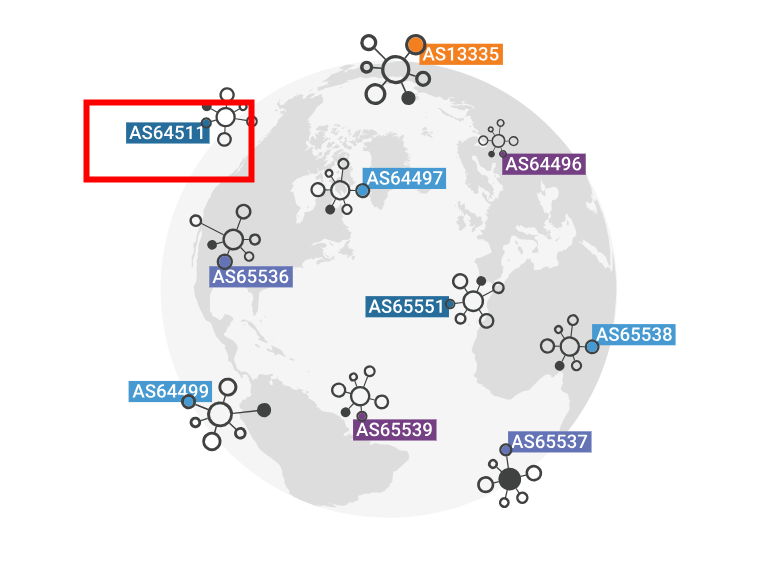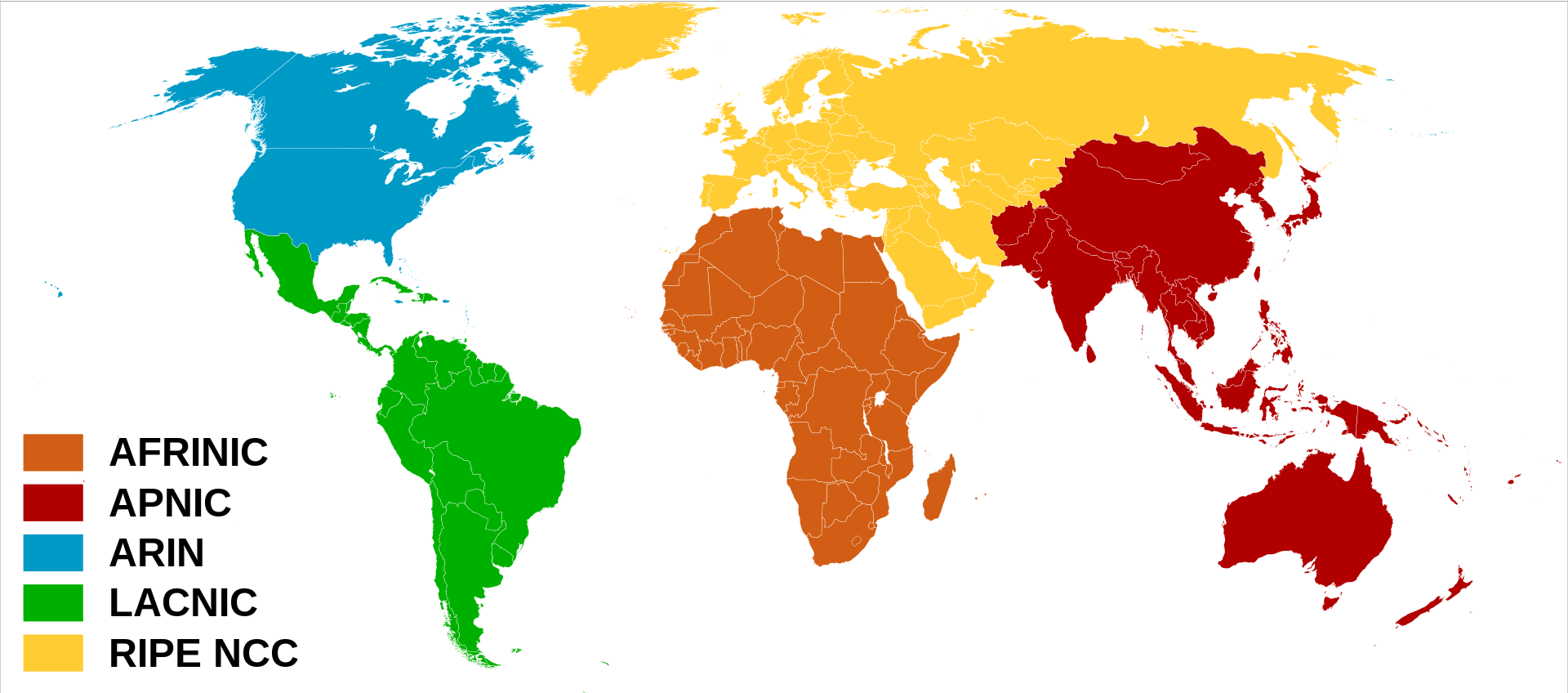What is an Autonomous System Number (ASN)?
 BrowserScan
BrowserScanAutonomous System Numbers (ASNs) act as unique identifiers for autonomous systems, facilitating efficient data routing and ensuring reliable communication across networks. Join us as we uncover the essential functions and advantages of ASNs in network communication.
What is an Autonomous System (AS)?
An autonomous system (AS) in networking is defined as a collection of one or more Internet Protocol (IP) prefixes, governed by a single administrative entity and operating under a clearly defined routing policy.
In simpler terms, an AS is a large network or group of networks that has a unified routing policy. Every computer or device that connects to the Internet is connected to an AS.
Autonomous system delivers data packets across the Internet from one AS to another, until it reaches the one containing destination IP address.
What makes the AS unique among network groups is that it must present a single, coherent routing plan to external autonomous systems, regardless of its internal communication methods.
The routing policy dictates how the AS communicates routing information with other autonomous systems.
Autonomous systems generally fall into one of three categories:
Multihomed: This type of AS connects with two or more other autonomous systems.
Transit: This kind of AS serves as a bridge between two or more other autonomous systems.
Single-homed (stub): This type of AS connects with only one other external AS.
What is Border Gateway Protocol (BGP)?
Autonomous Systems (ASes) use the Border Gateway Protocol (BGP) to manage how data travels across the internet. BGP is essential for routing data packets between different ASes. Without BGP, it would be nearly impossible to keep the internet functioning on a large scale because data packets could get lost or delayed.
Each AS announces its IP addresses and the ASes it connects to using BGP. BGP routers collect this data from ASes worldwide and store it in routing tables. These tables help determine the quickest paths for data packets to travel from one AS to another.
Since the internet is always changing—networks come and go, and ASes might increase or decrease their range of IP addresses—BGP routers continuously update their routing tables. This constant updating is crucial to ensure data moves efficiently and reaches its destination correctly.
What is an Autonomous System Number (ASN)?
Every autonomous system (AS) is given a unique number called an Autonomous System Number (ASN). This number identifies the AS and is crucial for exchanging routing information with other autonomous systems.

ASN formats
ASNs come in two sizes: 16-bit and 32-bit.
Until 2007, all ASNs were 16-bit. They run from 1 to 65,535. This amount was always bound to run out, just like what happened with IPv4 addresses. To solve this problem, 32-bit ASNs, ranging from 65,536 to 4,294,967,295, were created.
Types of ASNs
An ASN can be public or private.
An AS needs a public ASN to share data with other ASes online. With a public ASN, all routes originating from the AS are visible on the internet.
However, if an AS only communicates with one provider and uses BGP for that communication, it can get a private ASN. In this scenario, the routing policy between the AS and the provider isn't visible to the internet.
Regional Internet registries
The Internet Assigned Numbers Authority (IANA) manages the ASN system and coordinates the distribution of ASNs across five global regions.

The five regional internet registries are:
African Network Information Center (AFRINIC) for Africa
Asia-Pacific Network Information Centre (APNIC) for Asia and the Pacific
American Registry for Internet Numbers (ARIN) for Canada, the USA, and some Caribbean Islands
Latin America and Caribbean Network Information Centre (LACNIC) for Latin America and the Caribbean
Réseaux IP Européens Network Coordination Centre (RIPE NCC) for Europe, the Middle East, and Central Asia
How do ASNs work?
Internet service providers (ISP) use ASNs to identify their networks and the routes connecting them to the internet. This helps routers decide the best path for data packets between networks. ASNs let routers know where the data is headed.
Organizations also use ASNs to control the routing of their network traffic and to establish peering relationships with other networks. Peering means connecting networks directly to exchange traffic, instead of going through a third-party network.
How to get an ASN?
Any person or organization can request an ASN (Autonomous System Number). However, you must enter into a contract with an regional internet registrie(RIR) to get one. RIRs are organizations that handle the distribution and management of internet numbers for specific regions around the world.
ASN and Proxy
Optimizing Route Selection
When you use a proxy, you're essentially communicating with the internet through the proxy’s ASN. The efficiency of data transfer can vary significantly between ASNs, so choosing the right one is crucial for enhancing your internet performance.
For example, if you aim to access a server in Germany, and the proxy's ASN has direct connections to major data exchange points there, it will reduce the number of hops data must make, decreasing latency and improving stability. Opting for an ASN with good connectivity ensures faster and more direct data transfer, especially in international communications.
Bypassing Geographic Restrictions
Geographic restrictions are limits placed by online service providers based on copyright laws or user locations. Certain online content like streaming services, news websites, or software downloads might only be accessible from specific countries or regions. These restrictions typically involve analyzing the ASN of the user’s IP address to determine service eligibility. By using a proxy located in a region that has access to specific services, you can bypass these restrictions.
Enhancing Privacy Protection
A proxy hides your real IP address, displaying the proxy's IP to the outside world. This way, your online activities and geographic location aren’t directly exposed, increasing your anonymity.
Understanding the ASN of a proxy is also crucial for assessing its privacy quality. High-quality proxy services often have their own unique ASN, giving them greater control over traffic and user data management, and providing stricter privacy safeguards. These providers are typically more effective at resisting external surveillance and reducing data leakage risks.
Conclusion
Understanding Autonomous System Numbers (ASNs) is key to navigating the complexities of internet infrastructure. If you want to find out your ASN, you can check it on the BrowserScan's IP address lookup tool. Additionally, this tool allows you to discover the country associated with your IP address and provides information from various IP databases.
Subscribe to my newsletter
Read articles from BrowserScan directly inside your inbox. Subscribe to the newsletter, and don't miss out.
Written by

BrowserScan
BrowserScan
Am I 100% anonymous? Check your browser fingerprints and IP address to find how your online identity looks👉www.browserscan.net